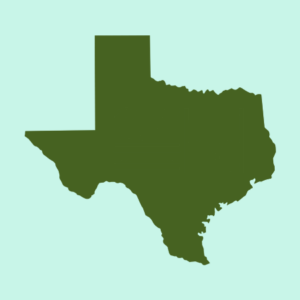Growth Pays for Itself in MUDs
The Texas economy and Texas population are booming. We’ve all witnessed the growth associated with the “Texas Miracle.” Thankfully, Texas continues to build thousands of new homes to accommodate growth.

470,708
According to the US Census Bureau,
from 2021 to 2022, Texas was the
largest growing state in the nation
with 470,708 new residents added.
30,029,572
As of 2022, Texas reached a total
population of 30,029,572.
MUDs provide affordably priced homes in amenity rich communities that help support the influx of new residents.
Existing Taxpayers vs. New Residents
Issue
Many cities are unwilling or unable to
extend basic infrastructure for new
development, especially outside their
city limits, because the existing taxpayers
do not want to pay for infrastructure for
new real estate development.
Solution
MUDs efficiently and equitably
fill this void by allowing the
residents and businesses who
use the services and facilities to
pay for them.
Who should pay?
Issue
Cities and counties with high rates of
growth & existing financial burdens
would be required to take on large
amounts of debt, increasing the burden
for their taxpayers.
Solution
As a MUD matures and pays for
its own infrastructure, its tax rate
declines. As a MUD pays for its
growth, it gradually reduces its
tax rate to focus on facility
maintenance. Other MUDs can
be created to accommodate
the next wave of growth.
Why the MUD Model Works
Using MUDs for new developments allows existing communities to avoid the
infrastructure burden of new real estate developments. None of the existing
residents in a city or a county pay for the public utilities and infrastructure
needed for a new subdivision in a MUD. In MUDs, growth pays for itself. The
residents in the new subdivision pay for their own infrastructure improvements.
This allows the state of Texas to grow at no expense to existing taxpayers.
An Economist’s Perspective
Jim Gaines, Chief Economist of the Real Estate Center at Texas A&M University for 15 years until retirement in 2021,
discusses the benefits of MUD growth paying for itself:
“During periods of rapid population growth that fuel the need for fast development of housing, counties and cities are often unable to keep pace to provide such services as roads and water/sewer capacity for new subdivisions.”
“MUDs have been crucial in allowing an adequate housing supply and keeping home prices lower than in other high-growth states.”
“Without MUDs, or something like them, Houston would probably be another very high cost housing market similar to the major markets in California.”
“The debate on the best
way to finance local, community infrastructure generally involves who pays for future growth –current residents or future residents. For existing residents, it may mean higher property tax rates or current user fees to pay infrastructure capital development costs to provide services to future residents. Current residents often want the future residents to pay for the facilities that newcomers will need and use.”
